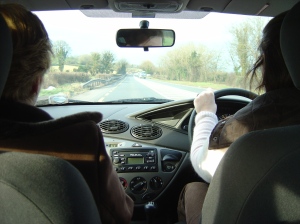I recently started another online course about how to teach online. This act usually is followed by more blog posts, as I try to make sense of my learning, but so far this hasn’t happened. The first week stimulated the usual flurry of enthusiasm and creative thought. Then I crashed—my creativity dried up and I have found it hard to pay attention to the discussions and assignments and to write about my learning journey. Something happened that made the topic of online learning more than just a theoretical exercise.
I took a risk and failed when I wanted so desperately to shine.
As I reflected on my sudden dampened enthusiasm for learning I thought back to another online experience that sparked my enthusiasm for learning and tried to identify how the two experiences differed. During #etmooc last year I experienced a period of intense learning and creativity and became very interested in researching the concept of creativity. I discovered the theories of Mihaly Csikzentmihalyi, including his thought s about creative flow. That knowledge led me to reframe my understanding of creativity as a genetic “gift” to one of “creative intelligence”, to recognize that all humans are born with creative capacity.
This year, I dug deeper into Csikzentmihalyi”s theory and was caught by his statement that, “creativity results from the interaction of a system composed of three elements: a culture that contains symbolic rules, a person who brings novelty into the symbolic domain and a field of experts who recognize and validate the innovation”. He compares creativity to a fire: you need a spark, tinder and air.
 Learning for me is about creative thought, sparking new ideas and new ways of understanding information and the world we live in. The spark needs tinder which is provided by the rich and seemingly endless knowledge and information afforded by the internet and connecting with knowledge holders to co-create new knowledge; and finally air, the recognition and validation of “the field of experts”, in my case my community of practice. If anyone of these three elements is missing the spark dies.
Learning for me is about creative thought, sparking new ideas and new ways of understanding information and the world we live in. The spark needs tinder which is provided by the rich and seemingly endless knowledge and information afforded by the internet and connecting with knowledge holders to co-create new knowledge; and finally air, the recognition and validation of “the field of experts”, in my case my community of practice. If anyone of these three elements is missing the spark dies.
What does my experience tell me about how to teach online? Some ideas for instructional design that enables learning (a far from conclusive list):
- Recognize and validate learner contributions.
- Encourage and facilitate sharing of knowledge.
- Appreciate the risks involved in online learning, even with mature sophisticated learners.
- Don’t assume that learners are doing OK. Check back with them often;
- Provide a mechanism for class feedback, such as an easily accessible general discussion board where students can share their feedback on the process of the course, not just the content or a tool such as Padlet
- Insure that learners know how to use the learning platform and provide tutorials, videos, screen casts, etc.
- Use both small group and large group activities
- Encourage creative techniques: drawing, collage,graphics, digital stories, etc. for those who think differently. These help learners find their voices in different ways and in different media.
I’d love to hear from you. Please tell me when do you feel most creative and excited about learning? and what fuels that spark for you?







